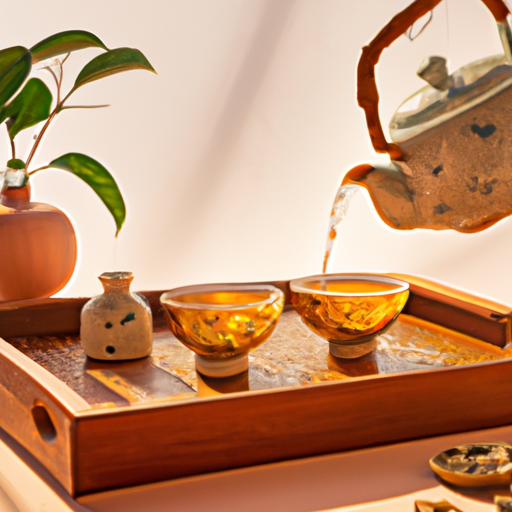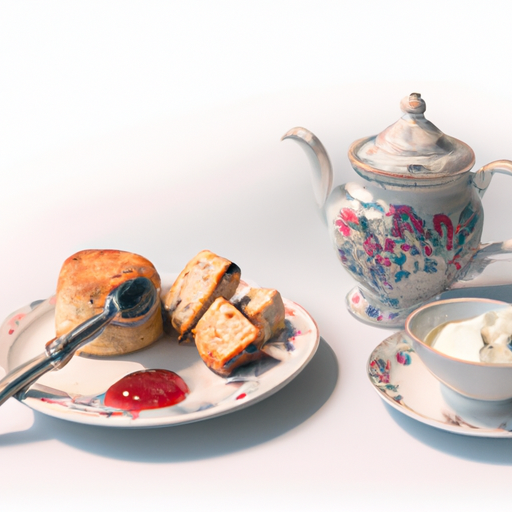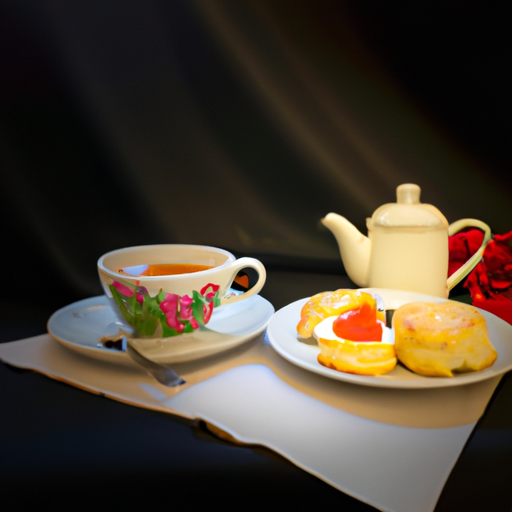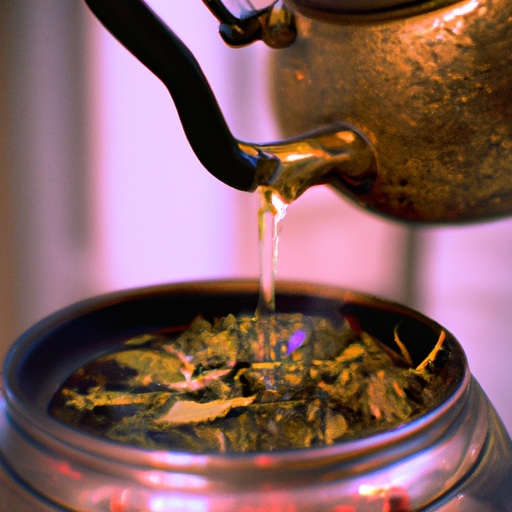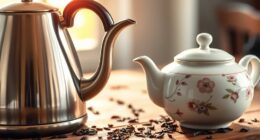Welcome to the delightful world of Hojicha tea! In this guide, I will take you on a journey through the rich and aromatic flavors of this exquisite Japanese tea.
Hojicha tea is a roasted green tea that offers a unique and captivating taste experience. Unlike other green teas, it has a lower caffeine content and a distinct lack of vegetal notes.
The roasting process gives the tea leaves a reddish brown color, and when brewed, it transforms into a beautiful reddish orange liquor. The result is a cup of tea that is both visually appealing and incredibly flavorful.
But Hojicha tea is not just about its exquisite taste. It also boasts numerous health benefits. With its high antioxidant activity, it is a healthy choice for those looking to boost their well-being.
In this article, I will guide you through the different types and flavors of Hojicha tea, share brewing tips to help you achieve the perfect cup, and delve into the many benefits this tea has to offer.
So grab your favorite tea cup, sit back, and prepare to embark on a delightful journey into the world of Hojicha tea.
Key Takeaways
- Hojicha tea is a roasted green tea from Japan with a unique flavor profile and lower caffeine content compared to other green teas.
- Hojicha has high antioxidant activity, which can help protect the body against harmful free radicals and reduce the risk of chronic diseases.
- Hojicha blends showcase the creativity and expertise of tea artisans, offering a distinct aroma and taste.
- Brewing Hojicha requires using freshly boiled water at around 195°F to 205°F to bring out the nuanced flavors and aromas.
What is Hojicha?
Hojicha is a roasted green tea from Japan that has a unique flavor profile and lower caffeine content compared to other green teas. The process of roasting the tea leaves gives Hojicha its distinct reddish brown color and brings out a roasted, nutty, slightly sweet, and woody flavor and aroma.
There are different types of Hojicha, each with its own flavor and strength. Some varieties may have a more pronounced roasted flavor, while others may have a lighter taste.
In addition to its delightful taste, Hojicha also offers several health benefits. Due to the roasting process, Hojicha has a lower caffeine content compared to other green teas, making it a great choice for those who are sensitive to caffeine. Furthermore, Hojicha has high antioxidant activity, even surpassing that of oolong or black tea. These antioxidants can help protect the body against harmful free radicals and reduce the risk of chronic diseases.
So, not only does Hojicha provide a delightful and comforting tea experience, but it also offers potential health benefits.
Types and Flavors
When exploring the various types and flavors of hojicha, it’s like embarking on a journey through a lush forest, with each tea offering a distinct aroma and taste that transports you to a different part of nature. Different hojicha blends showcase the creativity and expertise of tea artisans, who have skillfully crafted unique combinations to enhance the flavor profile of this beloved tea. From delicate floral notes to rich nutty undertones, there is a hojicha blend to suit every palate.
To help you navigate this vibrant world of hojicha, here is a table that highlights some popular types and flavors:
| Hojicha Blend | Flavor Profile |
|---|---|
| Hojicha Genmaicha | A delightful blend of roasted green tea and toasted rice |
| Hojicha Houjirou | Offers a smooth and mellow taste with a hint of sweetness |
| Hojicha Karigane | Known for its umami flavor with a touch of roasted chestnut |
| Hojicha Kyobancha | Has a deep, earthy flavor with a lingering smokiness |
Apart from the diverse flavors, hojicha also boasts numerous health benefits. It is rich in antioxidants, which can help support a healthy immune system and protect against free radicals. Additionally, hojicha’s lower caffeine content makes it a great choice for those looking to reduce their intake without sacrificing flavor. So, whether you’re a seasoned tea connoisseur or a curious beginner, exploring the world of hojicha will surely awaken your senses and introduce you to a whole new level of tea enjoyment.
Brewing Tips
To brew a perfect cup of hojicha, I usually start by using freshly boiled water at around 195°F to 205°F. The water temperature is crucial in bringing out the nuanced flavors and aromas of hojicha.
There are different brewing methods to choose from, depending on your preference. One popular method is to steep hojicha leaves in a teapot for about 1 to 2 minutes. This allows the flavors to develop without becoming overly bitter.
Another option is to use a Kyusu, a traditional Japanese teapot, which allows for multiple infusions. This method is great for savoring the evolving flavors of hojicha with each steep.
Regardless of the brewing method, using high-quality water is essential. The ideal water temperature ensures that the flavors are properly extracted, resulting in a rich, nutty, and slightly sweet cup of hojicha.
Frequently Asked Questions
How many times can the same batch of hojicha tea leaves be brewed?
Hojicha tea leaves can be reused multiple times, depending on personal preference. The optimal steeping time for hojicha tea is around 3-5 minutes. Reusing tea leaves can result in a lighter flavor profile, but it’s a great way to maximize the value of your tea.
Can hojicha tea be enjoyed with milk or other additives?
Hojicha tea can be enjoyed with different types of milk, such as almond or oat, and sweeteners. Compared to other roasted teas like genmaicha or kukicha, hojicha has a unique roasted, nutty flavor profile.
Does hojicha tea have any potential side effects or contraindications?
Hojicha tea is generally considered safe to consume, but like any beverage, it may have potential risks or health concerns. It’s important to note that individual reactions may vary, so it’s always advisable to consult a healthcare professional before incorporating it into your routine.
Is hojicha tea suitable for children or pregnant women?
Hojicha tea, like a gentle breeze on a sunny day, is generally considered safe for children and pregnant women due to its lower caffeine content. To maintain freshness, store hojicha tea leaves in a cool, dark place away from moisture and strong odors.
Can hojicha tea be consumed cold or used in iced tea recipes?
Yes, hojicha tea can be consumed cold or used as a base for cocktails. Exploring different ways to enjoy cold hojicha tea can be a refreshing and unique experience, bringing out the roasted and nutty flavors in a different way.
Conclusion
In conclusion, delving into the delightful world of hojicha tea is truly a sensory journey. As the warm, reddish-orange liquor fills your cup, the roasted aroma wafts through the air, transporting you to tranquil tea gardens in Japan.
With each sip, the nutty and slightly sweet flavors dance on your palate, leaving you feeling comforted and grounded. The knowledge of its lower caffeine content and high antioxidant activity adds to the appeal, making hojicha a healthy and satisfying choice.
So, indulge in the enchantment of hojicha tea and let its exquisite qualities envelop your senses.

